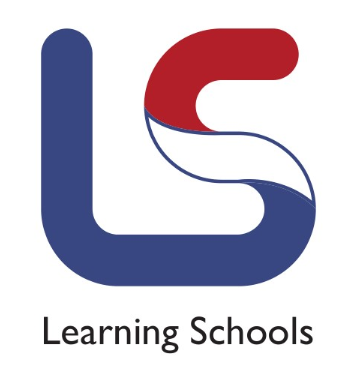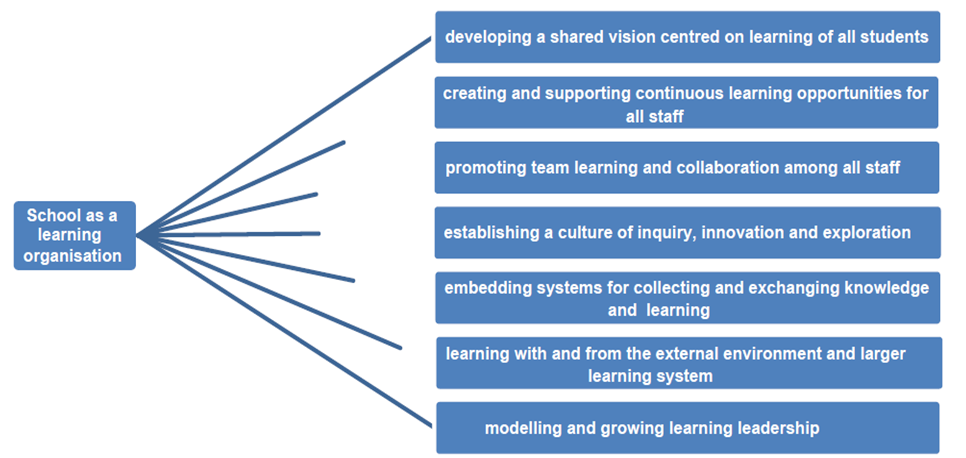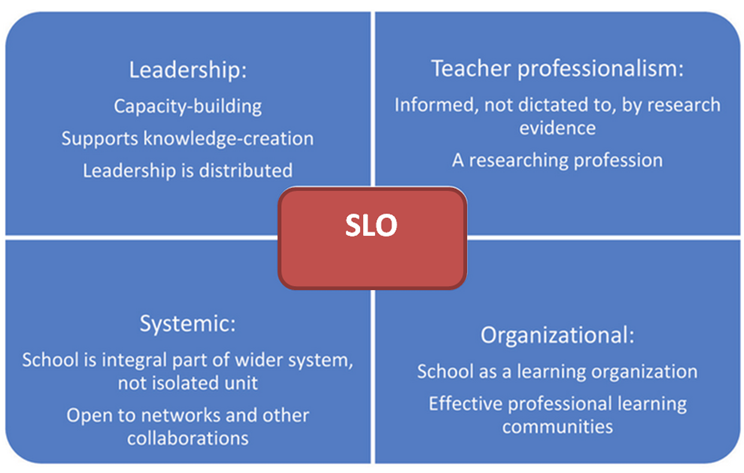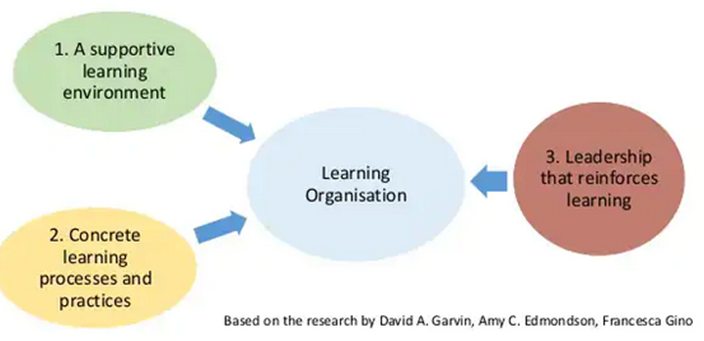 Learning Schools
Learning Schools
Schools as learning organizations: tips for the Model and its Assessment
Re-conceptualizing the Kools and Stoll Model on the basis of the research findings of the Learning Schools project
In order to bring about the changes in schools that will be needed to prepare our children for their future, we will have to think differently. While the concept of a school learning organisation may not be new, it’s time to give it a new lease of life: to draw on what previous studies and efforts can offer, but to connect this to a wider relevant knowledge base and the current context.
Deeper understanding is needed on how schools today can develop as learning organisations, and can be helped to do so. It is time to revisit arguments for reconceptualising schools as learning organisations (SLOs), a concept successfully practised in business and industry. SLOs have been seen as the ideal type of organisation for dealing with the changing external environment, for facilitating organisational change and innovation, and even improvements in students’ learning and other outcomes.
In this project, the effort to develop a measurement instrument for the school as a learning organization (LO) is based on the Kools and Stoll Model (What Makes a School a Learning Organisation?, 2016) that identified the following seven dimensions:

F I G U R E 1 - School as a learning organisation model. Source: Kools and Stoll (What Makes a School a Learning Organisation?, 2016), “What Makes a School a Learning Organisation?”, OECD Education Working Papers, No. 137, OECD Publishing, Paris
The research and the best practices analysis carried out in the “Learning schools” project has better defined the practical “ways of doing” linked to the 7 main indicators and the proposed Model takes into account the findings and the ways through which the schools analyzed in the countries involved in the project are covering, through concrete actions, the seven dimensions.
In the research it also emerged that for the investigated schools, the structure of learning organization is generally seen as a multilevel concept and can be defined as ‘organic’ and as consisting of interrelations between four levels: individual, team, organisation and systemic levels ( the school within its community and external environment).
For this reason, we can link the seven distinct but interrelated dimensions to the four levels:
A. At individual level
1. Create continuous learning opportunities
2. Promote inquiry, dialogue and innovation
B. At team/group level
3. Encourage collaboration and team learning
C. At organization level
4. Establish systems to capture and share learning (embedded systems)
5. Empower people toward a collective and shared vision
6. Provide strategic leadership
D. At systemic level
7. Connect the school to its environment and community
In this perspective the SLO has to be seen holistically: the school as an organization in which people are aligned to a common vision, sense and interpret their changing environment, and generate new knowledge which they use, in turn, to create innovation in education. That means (see IO1): “develop shared goals; establish collaborative teaching and learning environments; encourage initiative and responsibility taking; implement a middle management system; regularly review all aspects related to and influencing the work of the school; recognise and reinforce good work; and, provide opportunities for continuing professional development” .
Furthermore, the role of the educating community (formal and informal educators that co-operate with the school) has to be taken into account. Adding the notion of community brings ‘heart’ into the concept of learning organisation. An ethic of interpersonal caring is central to the idea of school community (Giles and Hargreaves, 2006), permeating the life of teachers, students and school leaders. The community emphasizes mutually supportive relationships and develops shared norms and values.
So the building blocks for the SLO to be taken into consideration are the following:

A comprehensive concept of SLO has to take into account four perspectives:
Systems thinking perspective – the conceptual cornerstone of the LO is an open system which relates to and interacts with the environment. It’s able to scan, discover changes and respond in order to restore equilibrium (O’Connor and McDermott, 1997). An open system has an adaptive capacity enabling the creation of alternative futures. It does this by adopting the disciplines of learning as a team, sharing the same vision, internalising models, being focused at a personal level but thinking systemically. A systemic, thinking organisation can see the bigger picture by looking at the system’s interrelationships both internally and externally.
Learning perspective – this focuses on studying the learning processes of and within the organisation i.e. organisational learning and middle management. Learning is required at all levels of the organisation. Social interaction, context and shared cognitive schemes for learning and knowledge creation are significant. Pedler, Boydell, & Burgoyne describe the LO – as “an organization that facilitates the learning of all its members and continually transforms itself”.
Strategic perspective – this emphasises the strategy required to develop core learning competencies for the present and the future. As such, learning capacity has to be created through an understanding of the necessary strategic internal drivers. This perspective also foregrounds the search for new ideas through exploration and exploitation.
Integrative perspective - this pulls together other perspectives: common vision at individual and organizational level and integration of the school within the community in which it is located.
This perspective also explores the relationship with other variables such as student outcomes or staff well-being. In addition, recognising the potential of sharing good practices for promoting school improvements (OECD, 2013) can inspire and inform other schools in their change and innovation efforts. Each school would surely benefit from learning from other schools’ experiences in innovating teaching and learning.
The elements can be summarized as below:

Of course the different national contexts, the policy climate, locally, regionally and nationally, clearly matter. A school doesn’t transform into a learning organisation on its own. Teachers and school leaders need help. They need the right conditions and support to undergo this transformation. Time and other resources, including engagement in networked learning and collaboration across school boundaries, are essential. They require professional learning opportunities and materials. In some countries schools and their principals have considerable discretion over resources while in others, school boards, local or higher levels of government play a more prominent, and sometimes inhibitory, role.
Also, schools are not equal in terms of their resources and capacity to use these resources effectively. Government policies and support structures are needed that are sensitive to local and school differences if SLOs are to blossom and thrive.
Also, teachers and educators need to be open to the kinds of thinking and relationships SLOs demand, and we know this isn’t easy. Changing mindsets in an innovative and changing process is always very difficult. Changing the status quo and some “dysfunctional learning habits” , including mental models, doesn’t come without effort.
